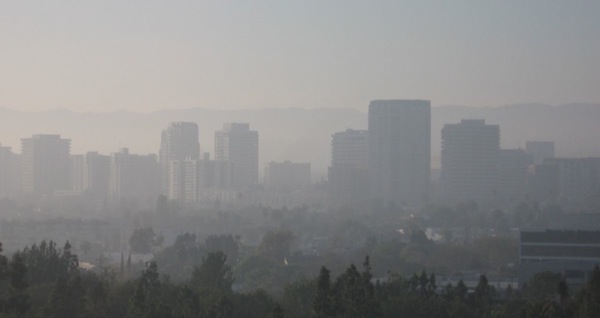

When a nuclear crisis came on the heels of the March 2011 tsunami that devastated Japan, there was an outcry from those seeking accurate information about radiation levels in various prefectures.
The situation prompted a group of friends to launch a crowdsourced Geiger-counting effort — which eventually grew into Safecast, a network for collecting and mapping radiation measurements across the world.
Now, with a $400,000 Knight News Challenge grant, Safecast will expand its efforts into air quality testing — starting in Detroit, Los Angeles, and Tokyo. Safecast cofounder Sean Bonner says the project will help identify good and bad air quality on a granular, neighborhood-by-neighborhood level. He’s also hoping to track changes in air quality over short periods of time. So say you live near the freeway: How much does air quality change during rush hour?
“If there are hundreds or thousands of sensors in the city, you can actually pinpoint where and when the air was changing,” Bonner told me. “It’s sort of the same thing we saw with radiation — these big general averages of an entire city aren’t very useful. Once we get more sensors out there, we think it will be.”
As with the radiation project, everything will be open sourced. Once the data starts flowing in, reporters will be able to ask questions about the areas that have the best and worst air quality. Because Safecast relies on individuals to contribute data, there’s no way to know how many sensors will be disseminated. One key difference is that the air quality will change “much more frequently” than radiation levels do. But similar to radiation, there are already assumptions that people have about air quality in certain areas. Bonner says those attitudes will help determine where initial sensors are placed.
“There’s lots of speculation about what places have bad air or good air and why,” Bonner said. “Obviously, we can’t go to a plant that everyone suspects pollutes and say, ‘Hey, let us put a sensor on your front door,’ but a neighborhood [that thinks it has bad air quality] will probably be receptive. People who really want to know that data are going to be the ones who are the early adopters.”
And getting individuals on board is key to building a comprehensive, accurate database. “If it’s tied to an industry or tied to the government — if it’s tied to any single source — you can’t trust it because you don’t know what the motives are behind that source. Having lots and lots and lots of independent monitors is a much more reliable source.”
On the wish list from here: Water quality testing and food contamination testing, both of which are costlier and more complicated than tracking radiation levels and air quality. “Water would be fantastic,” Bonner said. “Water and food, those are both things we get a lot of requests for. There’s just not a simple solution. If we keep moving down this line, hopefully we’ll get there.”
Photo by jbarreiros used under a Creative Commons license.